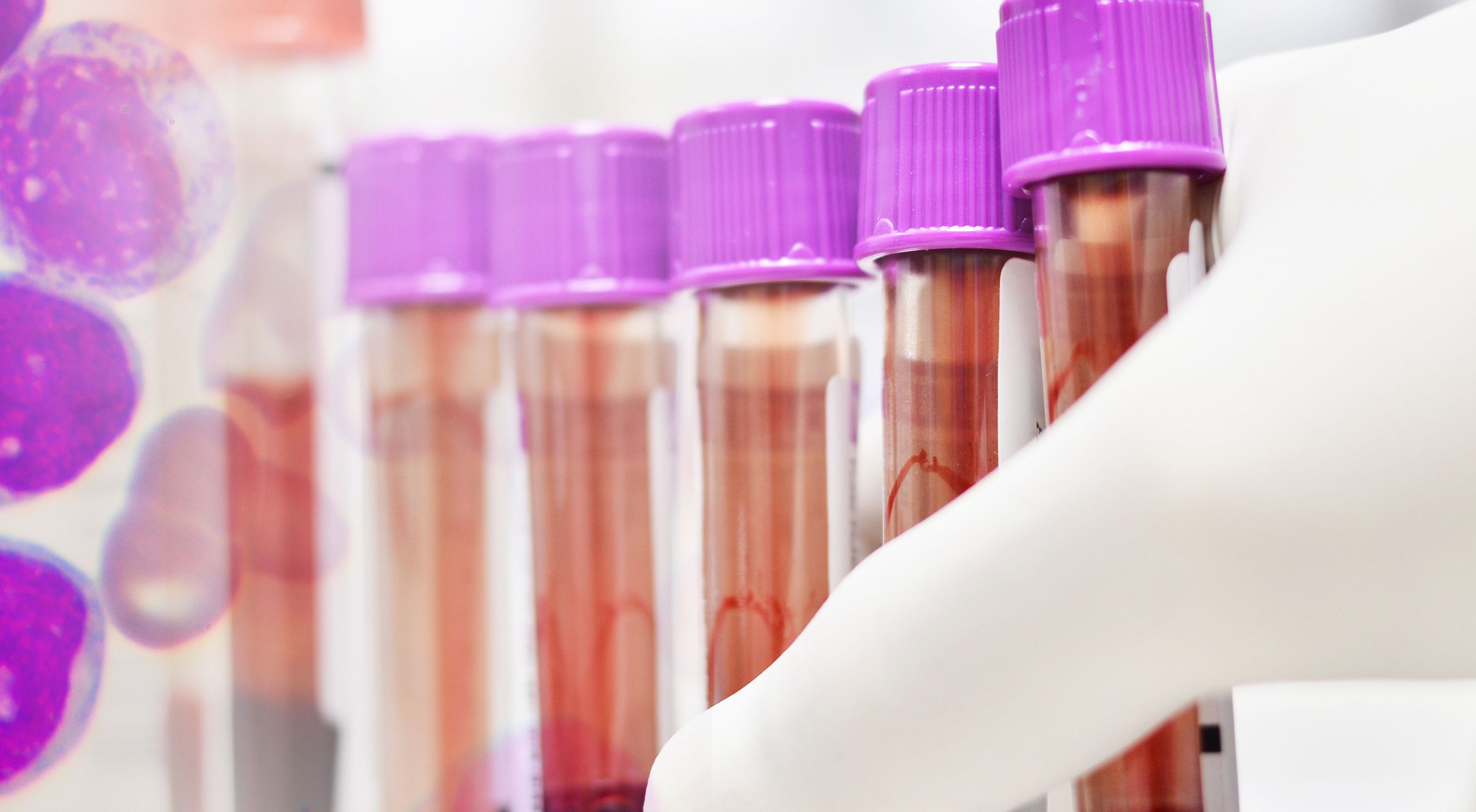News
Article
MRD Status Can Help Guide Treatments in NPM1-Mutated AML
Author(s):
Molecular minimal residual disease status may offer clues as to which patients with acute monocytic leukemia will benefit from certain therapies.
Minimal residual disease may offer treatment insights for patients with AML.

After patients with acute monocytic leukemia (AML) undergo induction chemotherapy (treatment with the goal of killing all or most cancer cells to induce remission), molecular minimal residual disease (MRD) assessments (tests for malignant cells remaining in the patient’s body following treatment) may be helpful in determining which patients have NPM1-mutated disease. This distinction can guide treatment decisions — especially in those with FLT3 internal tandem duplication (ITD), according to data presented at the 2023 American Society of Hematology Annual Meeting.
Of note, at first remission, the role of allogeneic stem cell transplant (ASCT) in NPM1-mutated AML remains controversial as there is significant variation in practice.
Historically, the benefit of ASCT was observed in patients with NPM1-mutated AML in the presence of FLT3 ITD; however, with the increased understanding of MRD and its improvement on survival, the need to identify the primary determinant of benefit has grown. Although ASCT can benefit patients with AML, research suggests that patients with favorable risk generally do better with chemotherapy and that the risks and adverse events from ASCT outweigh the benefits in these patients. Alternatively, in patients who are at adverse risk with AML generally do poorly with chemotherapy and are likely to benefit from transplant.
“In general, an allogeneic transplant is offered in first remission to patients with AML who have an adverse risk. It is not offered in favorable risk,” lead author Dr. Jad Othman, of Guy’s and St Thomas’ NHS Foundation Trust in London, said in a presentation of the data. “The question of (offering transplant) in intermediate risk has always been one that has been controversial.”
To determine if patients who were MRD-positive had improved survival when they received an ASCT compared with patients who were MRD-negative, data were compared from two large United Kingdom studies, AML17 and AML19. A total of 737 patients who achieved complete remission, meaning that there was no remaining detectable disease, and had a valid MRD result were evaluated. In AML17, 17% of patients were MRD-positive and 21% in AML19 were MRD-positive. Overall, ASCT was performed in 20% of patients in AML17 and 25% of patients in AML19.
“Importantly, the selection of patients for transplant in the two studies were very different,” Othman said. “In AML17, patients were selected based on a validated risk score, as determined by age, sex, secondary disease, cytogenetics, white cell count and response after one course of chemotherapy.” In AML19, patients underwent ASCT only if they were MRD-positive in the peripheral blood after chemotherapy cycle 2.
Time-to-event variables were analyzed using the Kaplan-Meier method, and the impact of ASCT was assessed using Cox regression and visualized with Simon-Makuch plots, said Othman.
It had been previously reported in AML17 that patients who were MRD-positive had poor outcomes with a three-year cumulative incidence of relapse (CIR) rate of 84% and a three-year overall survival (OS; percentage of patients who are still alive) rate of 25%.In AML19, the three-year CIR was 50% and 3-year OS rate of 51%.
A significant survival advantage was observed in patients who had detectable MRD after the first two courses of chemotherapy if they received a transplant in their first remission compared with patients who were MRD-negative after chemotherapy.
“Those patients who were MRD-negative after chemotherapy did not derive any survival advantage from having a transplant in their first remission,” Othman said.
MRD also predicts ASCT benefit in patients with NPM1-mutated AML and FLT3 ITD, which has traditionally been considered to be a strong indication for transplant, Othman said. In this patient population, patients who were MRD-positive benefited from ASCT versus no ASCT compared with patients who were MRD-negative.
“This held true even if it was limited to those patients with a high allelic ratio for FLT3 ITD,” Othman said. In other subgroups, the investigators “weren’t able to identify any MRD-negative population in whom a transplant and chemotherapy provided a survival advantage,” Othman added.
Based on this analysis, the investigators concluded that MRD after induction chemotherapy identifies patients with NPM1-mutated AML who benefit from ASCT in first remission. Further, after second induction, patients who were MRD-negative show no benefit from transplant, even with FLT3 ITD co-mutation.
For more news on cancer updates, research and education, don’t forget to subscribe to CURE®’s newsletters here.





